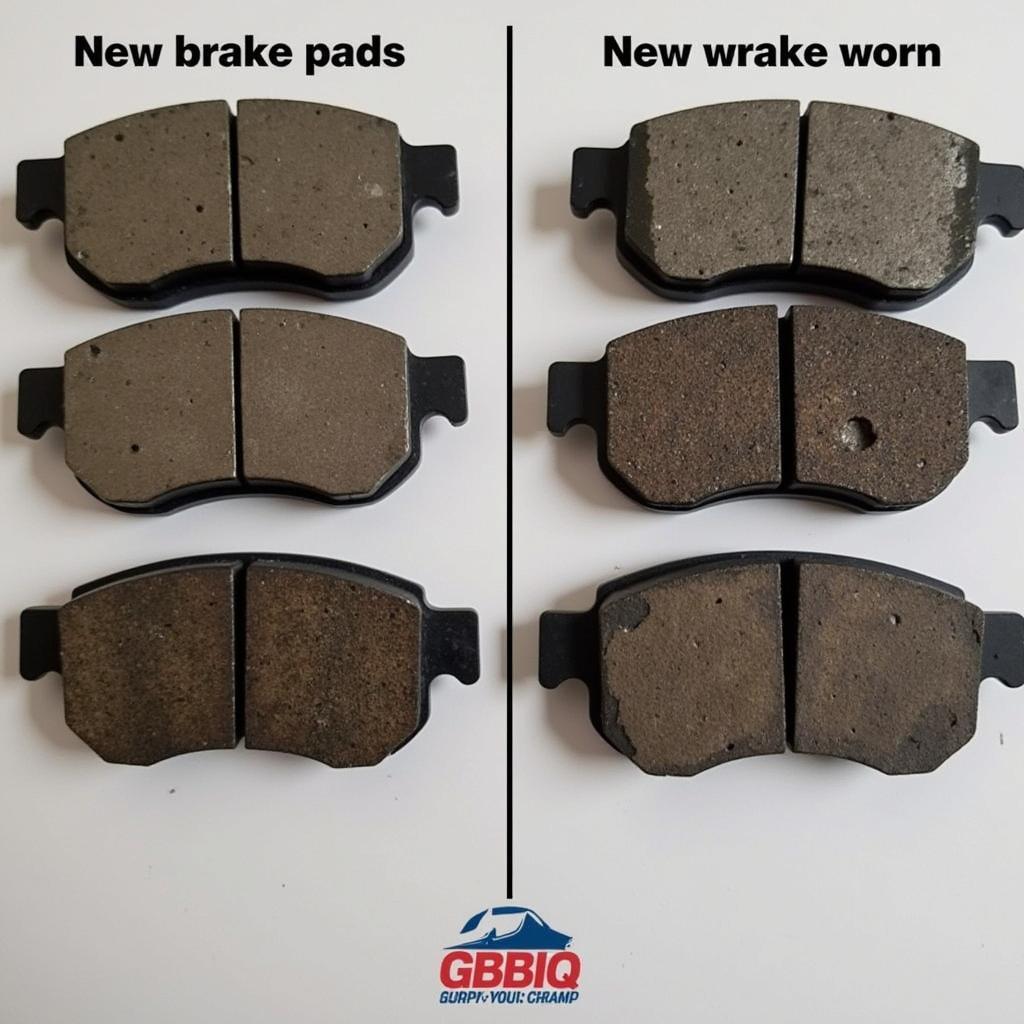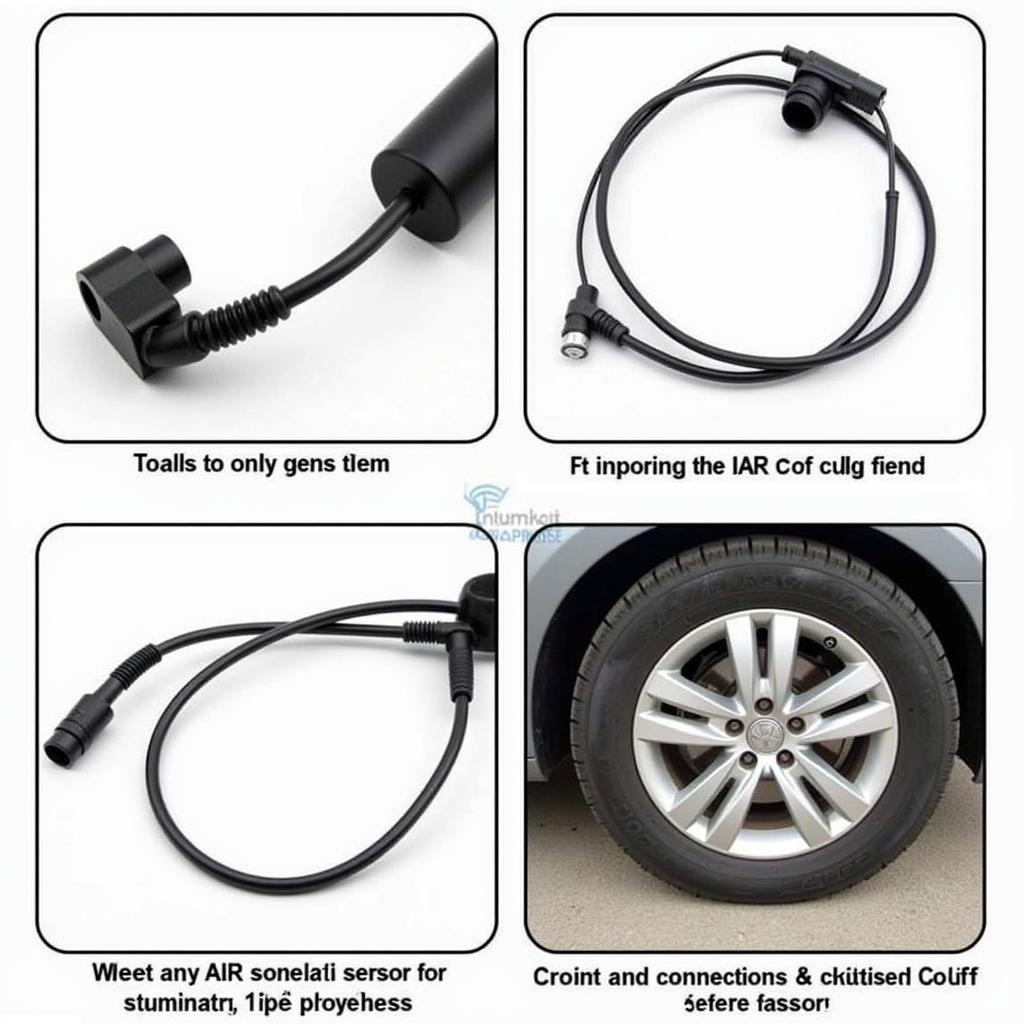The brake warning light on your MK4 Golf is a crucial safety feature, illuminating when the car’s onboard computer detects an issue within the braking system. While it could signal a minor problem, ignoring it can lead to serious consequences. This comprehensive guide will help you understand the common causes of the MK4 Golf brake warning light and provide practical solutions to get you back on the road safely.
Understanding Your MK4 Golf’s Brake Warning Light
The brake warning light, often a red circle with an exclamation mark or the word “BRAKE”, serves as your car’s early warning system for brake-related issues. It can illuminate in different ways, each indicating a different potential problem:
- Solid light: Typically indicates a problem with the hydraulic brake system, low brake fluid, or a fault with the ABS system.
- Flashing light: Often signals an issue with the ABS (Anti-lock Braking System), a crucial safety feature that prevents wheel lock-up during braking.
Common Causes of an Illuminated Brake Warning Light
Several factors can trigger the brake warning light on your MK4 Golf. Here are some of the most common culprits:
1. Low Brake Fluid Level
One of the most common and easily rectified causes is low brake fluid. Brake fluid is the lifeblood of your braking system, and as it becomes depleted due to leaks or wear, the warning light will activate.
Solution:
- Check the brake fluid level: Locate the brake fluid reservoir under the hood (refer to your owner’s manual for its exact location) and visually inspect the fluid level. If it’s below the “MIN” mark, add the correct DOT specification brake fluid (usually DOT 4).
- Inspect for leaks: While adding fluid, carefully examine the brake lines, hoses, and connections for any signs of leakage. Any visible leaks require immediate professional attention.
2. Worn Brake Pads
Brake pads are designed to wear down over time. When they reach a certain thickness, the brake pad wear sensor will trigger the warning light, prompting you to replace them.
Solution:
- Inspect brake pad thickness: If you’re comfortable with basic car maintenance, you can visually inspect the brake pads through the wheel spokes. If they appear thin or you see a wear indicator touching the rotor, it’s time for a replacement.
- Professional inspection and replacement: If you’re uncertain about the condition of your brake pads, it’s always best to consult a qualified mechanic for inspection and replacement.
 Worn Brake Pads on MK4 Golf
Worn Brake Pads on MK4 Golf
3. Faulty ABS Sensors
The ABS system relies on sensors at each wheel to monitor wheel speed and prevent lock-up. A malfunctioning or dirty ABS sensor can disrupt this process, leading to an illuminated brake warning light, often accompanied by a flashing ABS light.
Solution:
- Professional diagnosis: Diagnosing ABS sensor issues requires specialized equipment. A mechanic can scan the system for fault codes, pinpoint the problematic sensor, and recommend the appropriate course of action.
4. ABS Module Problems
The ABS module is the brain of the Anti-lock Braking System. While less common, a failing ABS module can also trigger the brake warning light.
Solution:
- Professional diagnosis and repair: ABS module issues are complex and often require specialized knowledge and equipment for diagnosis and repair. A qualified mechanic or dealership is best equipped to handle these situations.
5. Brake Light Switch Malfunction
The brake light switch activates your brake lights when you press the pedal. A faulty switch can disrupt this signal, potentially affecting the brake warning light as well.
Solution:
- Check brake light operation: Have a friend observe your brake lights while you press the pedal. If they don’t illuminate, the switch may be the culprit.
- Replacement: Brake light switches are relatively inexpensive and straightforward to replace. However, if you’re uncomfortable with car maintenance, consult a mechanic.
 MK4 Golf ABS Sensor Location
MK4 Golf ABS Sensor Location
What to Do When Your Brake Warning Light Illuminates
- Don’t panic: While seeing any warning light can be concerning, remain calm and assess the situation.
- Pull over safely: If possible, safely move your car off the road and away from traffic.
- Check your owner’s manual: Your MK4 Golf’s owner’s manual is an invaluable resource, providing specific information about your car’s warning lights and recommended actions.
- Assess the situation: Consider the information presented above and try to identify any potential causes you can address yourself, such as low brake fluid.
- Seek professional help: If you’re unsure about the cause or severity of the problem, or if you’re uncomfortable performing any repairs yourself, err on the side of caution and contact a qualified mechanic or your local dealership.
Prioritizing Safety and Timely Maintenance
Your MK4 Golf’s brake warning light is a crucial safety feature, never to be ignored. While some causes, like low brake fluid, can be addressed with simple DIY fixes, others require professional attention. Remember, regular maintenance, including timely brake inspections, is essential for ensuring the safety and reliability of your vehicle.
